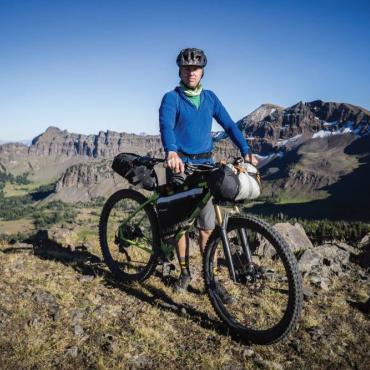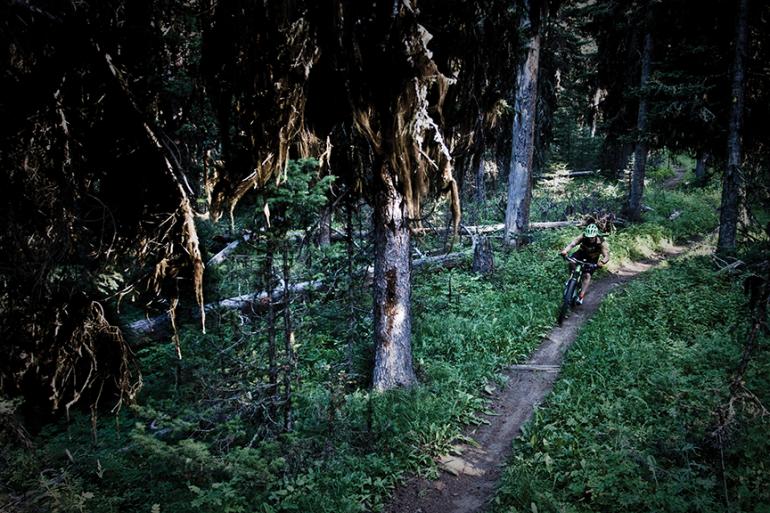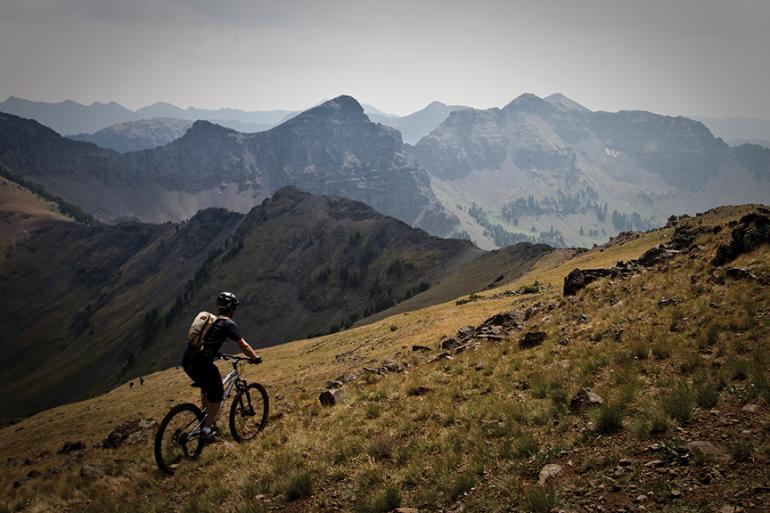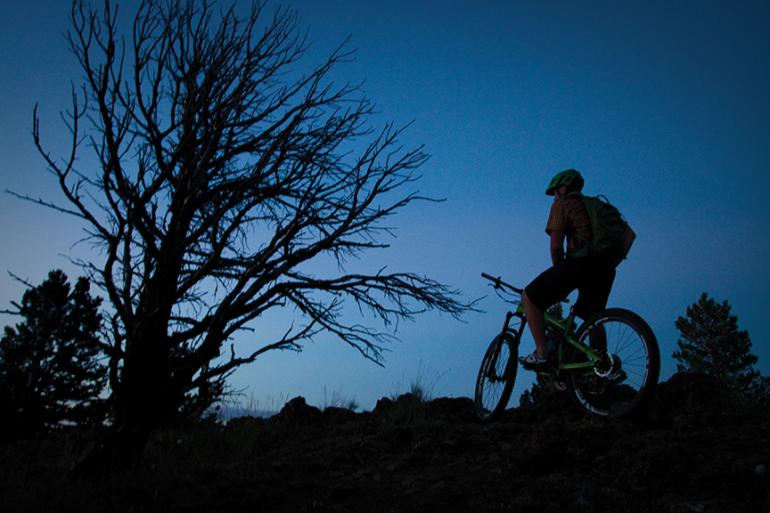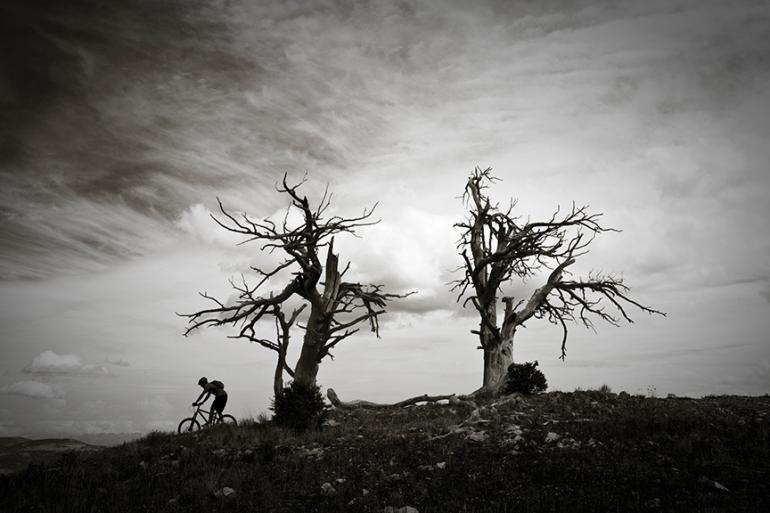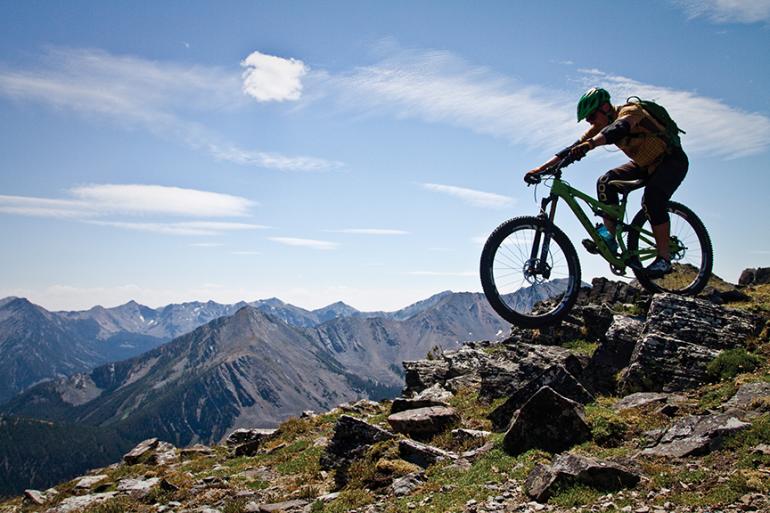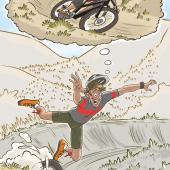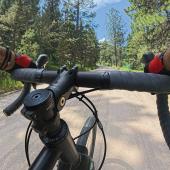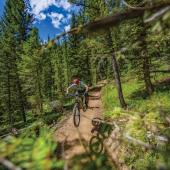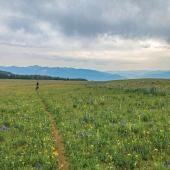A Path Less Traveled
Biking Bozeman's hidden trails.
Mud spun off the tires and splattered my legs as I cycled through another pedal-stroke. The sun dipped low on the horizon, turning the skyline orange—the kind of evening that makes you want to ride until the wheels fall off. Rounding one more manicured turn, I made it to a fork in the trail and came to a stop, clicking out of my pedal and putting a foot down on well-compacted soil.
It wasn’t that I was lost. I knew where to go, but something didn’t sit right.
It was late July, and I’d spent my summer cycling through all the usual rides around Bozeman—classic trails that don’t change because they don’t need changing. These familiar trails were great, but the views—however remarkable—remained the same.
I no longer wanted to know where I was headed. I wanted the unknown.
I wanted to go beyond the conventional routes—to explore trails that I wasn’t sure connected, take forks that only hinted at a trail, hike to places where passersby look at my bike and ask, “Where are you going with that?”
Glance at a map, trace your finger along its curved topographic lines, and it becomes immediately clear: in the shadows of Bozeman’s polished and popular mountain biking trails are hundreds of miles of adventure riding—a lost city of gold, hiding in plain sight. I had to see for myself what was threading throughout the entirety of the Gallatin National Forest.
The sounds of the forest reverberated through our ears as my partner and I pedaled away from a familiar trailhead. This time, however, we had no intention of making it back. Cassettes clicked and chains clanked as we clambered over roots and rock gardens beside a trickling stream. Wind twisted the branches overhead and brush scraped our legs.
After a couple miles, the trail got steeper. The riding and pedaling became walking and hiking. The bike got heavy and the trail got rough. The dirt turned to rock and then the rock turned to scree. The forest opened up and the hillsides gave way to mountainsides and cliff faces, eventually leading to a summit. Peaks with jagged rock faces unfolded into the distance—places where bikes don’t belong.
It was time to descend. But to turn around and ride right back down that mountain would have defeated the point. So we looked another direction—behind the mountain peak at a long, unridden drainage off the other side.
Looking down from our summit perch to the open saddle, deep forest, and cold creek below, we readied our gear. We’d wondered about this place for seasons and now here we were, as high as we could be, ready to head down into the drainage just to see what we could see. It was possible that nothing worthwhile existed, but seeing something new was the whole idea—the reason we were willing to take a risk.
It started slow. The steep rocky summit was far from perfect, but no ride like this should be. Our temporary difficulty only masked the reward as we made our way down toward the saddle. We were committed. The switchbacks were rough but the terrain softened and alpine stone gave way to meadows and a mountain lake. Trees began to fill in the open space overhead, diffusing the harsh mid-day light.
The untraveled trail was spotty but we connected the dots—bridging the gaps as our line developed. And while the trail surface improved, so too did the terrain. A few turns at first, banked into untrammeled dirt, and before long we were dipping and weaving—using speed from small descents to roll right back up adjacent inclines, one after another until our laughs and hollers drowned the sounds of chains and suspension and rubber on roots, and birds screeching as they followed our dipping and diving path.
The trail continued to improve as the miles ticked away. It was more then we could have hoped for and soon the dirt turned to rock, and the rock plunged into a deep creek where we met the water’s edge. After crossing the frigid tributary, we wove across more of those mysterious lines on the map with increasing frequency—holding our speed and following the dirt ribbon downhill.
At last, we turned a corner and found ourselves again on a familiar trail that rolled on through the forest, smooth and intentional. The rush of the unknown was gone, but what remained was a newfound addiction: the drive to dig deeper. The feeling of finding something hidden; the pull of gravity; the flow of the trail; the fresh air and the endorphins—together they created a feeling of discovery that can’t be faked or created, only found. It is a feeling that by definition can’t happen again in the same place.
After that first taste of freedom, there were more rides—more climbs, more turns, more dirt and more roots—more getting lost and more being found. We walked, climbed, sweat, bled, broke things, and came home after dark with worried looks on our faces. We found that adventure begins when you have no idea what comes next, and you continue on because you have to know what’s around the next nameless bend.
We are surrounded by lonely trails, where downed trees block the path, animals roam wild, and trail signs have never been planted. Go ride them.

